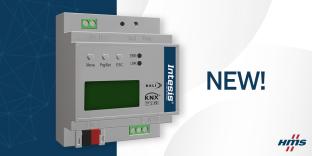New smart building technologies are making the systems that run buildings more responsive and reliable for the people and businesses within their walls
Advances in building and information technologies have brought a new Big Data analytics-based approach to facilities management—one that ushers in a new era of operational control, reliability and productivity for businesses and workers. Smart buildings can increase employee comfort, engagement and productivity, according to Jones Lang LaSalle’s latest report, The Changing Face of Smart Buildings: The Op-Ex Advantage.
“Technological advances have finally converged with long-existing and significant opportunities for improving energy efficiency and the user experience within buildings,” said Dan Probst, Chairman of Energy and Sustainability Services at JLL. “We are seeing tenant satisfaction improve while building operating costs are reduced, especially when tenants are actively engaged with controlling energy usage.”
Today’s computer-controlled “smart” building systems can be programmed to accommodate the needs of building occupants. Lighting and temperature, for instance, can automatically adjust during peak and off-peak occupancy periods. In addition, these automated systems generate reams of data that a smart building management service can transmit to a remote data center for analysis by facilities professionals.
Using predictive analytics, facilities managers can anticipate and address user needs and requests related to heating, ventilation, lighting, way-finding, security and more. Smart building technologies can be used to provide a more customized and energy-efficient experience for building users—think, better temperature, lighting or security control for offices, and more reliable power for manufacturing facilities.
“The Big Data generated by smart building systems is a major force shaping the human experience within buildings,” said Probst. “Building data analytics provides unprecedented insight into energy use and facilities operations.”
Affordable new technologies driving smart building progress
Recent significant price reductions in cloud computing-based building management technologies have made these systems affordable. Wireless sensors, used in smart building managed services such a JLL’s IntelliCommandTM, for example, are now available for less than $10 per unit. These wireless sensors can transmit data from smart systems in hundreds of buildings to far-flung remote cloud-computing platforms where advanced analytics can turn data into actionable intelligence to improve building performance. This highly-automated platform is further supplemented by “command centers” staffed around the clock by facilities data analysts who can support the on-site property team.
Building occupants’ growing expectations
Smart buildings can boost tenant satisfaction and productivity, according to The Changing Face of Smart Buildings. Along with next-generation buildings comes a new generation of building occupants, with new workplace preferences and expectations for their work facilities. Companies increasingly rely on mobile workers, and smart buildings are able to adapt more readily to new flexible workplace models. Clean, green, efficient buildings are gaining a marketing advantage for landlords.
“The trend for employees to connect from anywhere, or to bring their own devices to custom-fitted work settings, will profoundly change the way building owners lease space,” says Probst. “Demand for more network sophistication that can adapt to changing work patterns will play to the advantage of smart building owners.”
Smart buildings also can help companies use sustainability as a hook for engaging employees. In a major Empire State Building energy retrofit, JLL added smart building components to the landmark office property. Real-time energy displays enable Empire State Building tenants to better monitor and control their energy consumption, and even compete with other tenants in the building to achieve energy savings.
Looking ahead is Fraunhofer CSE’s Building Technology Showcase in Boston that houses Fraunhofer’s building science research facilities, designed to consume half the energy of a comparable structure. In the lobby, an iPad-driven display shows the building’s internal smart building technology at work, with digital read-outs showing real-time energy gains in lighting, cooling and heating, water use and energy generation. It’s a simple but powerful idea that potentially could be applied in every smart building lobby.
Jones Lang LaSalle’s report, The Changing Face of Smart Buildings: The Op-Ex Advantage, provides a comprehensive, state-of-the-market view on smart buildings, providing the first multi-dimensional business case for smart technology investment.











